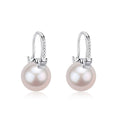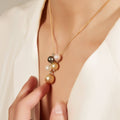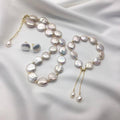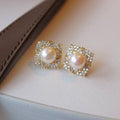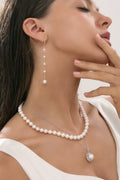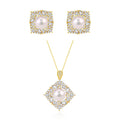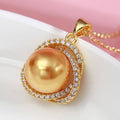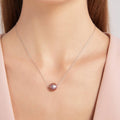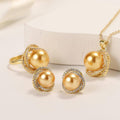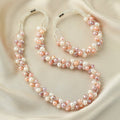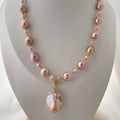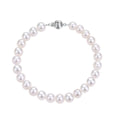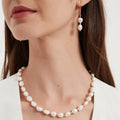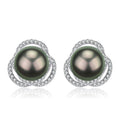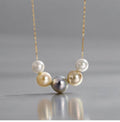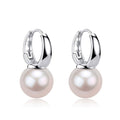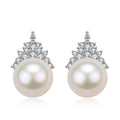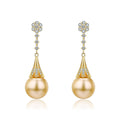Pearl Grading
Pearl Grading: An Explanation of the Various Pearl Grading Systems and How to Determine the Quality of a Pearl
When selecting pearl jewelry, understanding the various pearl grading systems is essential to ensure you're getting the best quality for your investment. Pearl grading evaluates the pearls' characteristics, such as luster, surface quality, shape, and color. While there is no standardized global system for pearl grading, the industry generally uses the A, AA, AA+, AAA, and AAAA scale, with AAAA being the highest quality. Let's explore the key factors considered in pearl grading.
- Luster
Luster is the measure of how light reflects off the pearl's surface, giving it its unique glow. High-quality pearls have a sharp, bright luster, while lower-quality pearls may appear dull or chalky. Luster is often considered the most important factor when grading pearls, as it directly impacts their beauty and value.
- Surface Quality
Surface quality refers to the number of imperfections, such as spots, bumps, or scratches, on the pearl's surface. A pearl with fewer imperfections will receive a higher grade, while those with more visible blemishes will be graded lower. Keep in mind that no pearl is entirely perfect, but high-quality pearls will have minimal surface imperfections.
- Shape
Pearls come in various shapes, including round, near-round, oval, button, drop, and baroque. Round pearls are often considered the most valuable due to their rarity and classic appeal. However, other shapes can also be highly sought after, depending on personal preference and the uniqueness of the jewelry design. The pearl's shape is a significant factor in grading, with rounder pearls typically receiving higher grades.
- Color
Pearls are available in a stunning array of colors, from classic white and cream to exotic shades like black, silver, and gold. While color does not directly impact the pearl's grade, certain colors may be more valuable or rare, affecting the pearl's overall value. When evaluating color, it is essential to consider factors such as personal preference and the pearl's ability to complement your skin tone and wardrobe.
- Size
Size is another factor that can influence a pearl's value, with larger pearls generally being more valuable due to their rarity. While size does not directly impact the pearl's grade, it is essential to consider when choosing pearl jewelry. The ideal size for you may depend on factors such as personal preference, the type of jewelry, and the overall desired look.
In Conclusion
Understanding pearl grading is crucial when selecting pearl jewelry to ensure you are choosing the best quality pearls within your budget. By considering factors such as luster, surface quality, shape, color, and size, you can make an informed decision and find the perfect pearl jewelry to suit your style and preferences. With the AAAA grade as the highest quality in our shop, you can trust that you are purchasing top-tier pearl jewelry.
Freshwater Pearl Grading
Akoya Pearl Grading
Tahitian Pearl Grading
South Sea Pearl Grading
Unparalleled Quality.
Hand-selected and individually inspected pearls ensure our highest quality standards.
Fair & Transparent Pricing.
Jewelry up to 80% below traditional retail prices. Luxury without the markup.
Free Shipping Worldwide.
On orders over $69 USD
Buy Now Pay Later With Klarna.
BECOME A HOUSE MEMBER
Drop your email below and we'll send you members-only discount.


